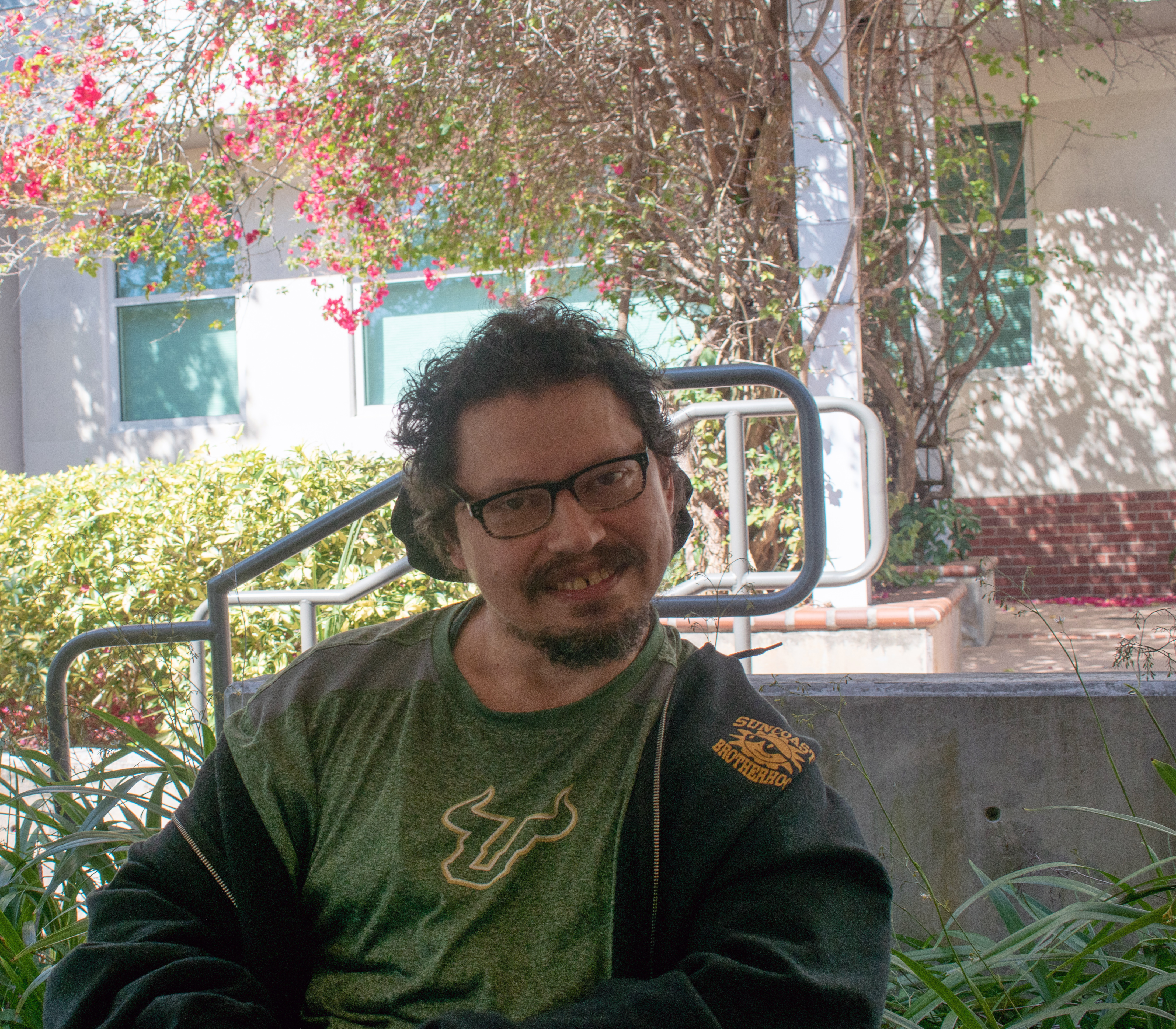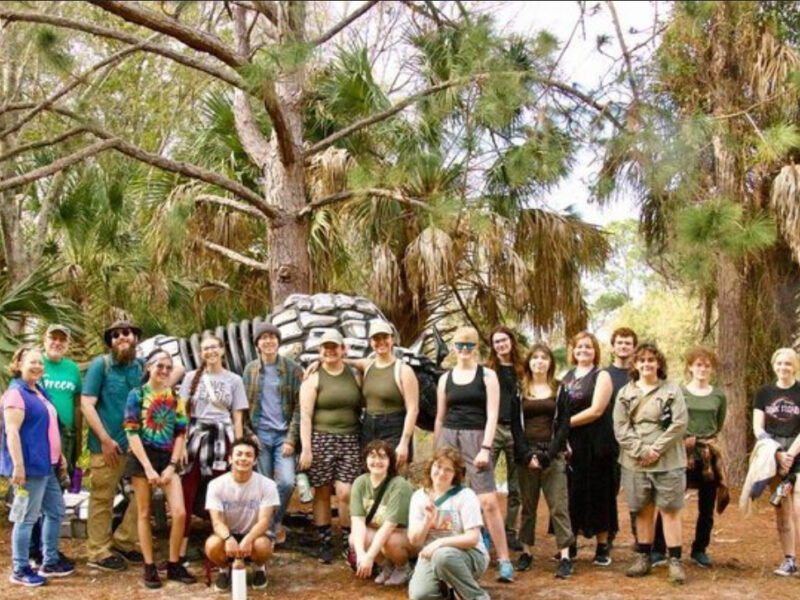
By James Bennett III
Whether you’ve had the pleasure of speaking with him or you’ve simply noticed him around campus, Robert Beasey is a familiar student to most people at USF St. Petersburg.
To some, he is the “tenacious young man” who never misses a class. Others refer to him as “the campus’ mayor.”
Beasey, 46, is also physically challenged and uses a wheelchair to navigate campus.
Most days, he arrives on campus by 9:30 a.m. and spends 10 to 12 hours there. His favorite place to spend downtime is The Tavern at Bayboro, where he regularly orders the Social Chair with a side of fries and a Coke.
Over the course of nearly 10 years, while earning his bachelor’s degree in interdisciplinary social sciences, Beasey has watched the campus grow and transform.
The campus’ bookstore moved to make way for The Campus Grind. Ownership of The Tavern at Bayboro switched hands. Some students left the university, and others joined, all while Beasey shared a few laughs and revelled in their camaraderie.
He uses his connections around campus to advocate for people with disabilities.
To show other students with disabilities that they could get a job, Beasey started working at the Student Disability Services office.
“There’s nothing out there that you can’t achieve,” Beasey said.
He even used his senior capstone project to advocate for people with disabilities.
On March 27, he directed an event that put faculty and students in his shoes.
From 10 a.m. to 2 p.m., Beasey was set up at The Grind with a laptop and three wheelchairs.
Thirteen volunteers were directed to walk from The Grind to Lowell E. Davis Memorial Hall, Room 284, then to the Science and Technology building’s wheelchair-accessible bathroom across the sidewalk, then back to The Grind.
“I wanted to incorporate buildings that students frequent the most,” Beasey said. “Buildings that I frequent.”
After they walked the course, volunteers were instructed to do it again in a wheelchair and pick up a few items that proved they stopped at every location.
As they returned to The Grind, Beasey greeted them with his trademark smile and asked the volunteers to answer a few questions.
- What was it like to walk the obstacle course?
- What was it like to do the the obstacle course in a wheelchair?
- Did you cheat? If so, why?
Every volunteer agreed that the course was more difficult in a wheelchair; inclines were a challenge, and maintaining control of the chair while going downhill was difficult. The elevator that took students to the second floor of Davis Hall was hard to locate, and the ramp that leads to the STG front door is narrow.
Beasey is able to complete the course in about 18 minutes.
Nobody admitted that they left their wheelchair, but some confessed to using their feet to maneuver, using walls for support and locating the Davis building elevator during the walking portion. To Beasey’s amusement, one student confessed that they used the railing to get up the STG ramp.
The project was born out of a frustrating visit to see a doctor. Beasey’s appointment was on the third floor, which was inaccessible to wheelchairs.
When Beasey told Frank Biafora, a sociology professor, about his frustration, Biafora suggested that Beasey used his capstone project as an opportunity to research accessibility at USF St. Petersburg.
With the help of Barry McDowell, the assistant director of Student Disability Services, Beasey planned his obstacle course to shed light on how inaccessible USF St. Petersburg can be. As it turned out, the project coincided with disability awareness month.
Having spent so much time on campus, Beasey knows the ins and outs of accessible locations. There is a wider ramp at the back entrance of STG, and there are multiple entrances to every building.
However, the button that is supposed to automatically open The Grind’s door doesn’t work, the men’s room at The Tavern is inaccessible, and an upstairs bathroom in Davis Hall needs some work.
Sometimes, other students are what make the campus less accessible.
The button that opens automatic doors can be disabled by a switch at the top of the door. In multiple cases, people have flipped the switch during business hours.
Although Beasey is able to open the doors himself, he tries to stick around until somebody else can turn them back on for other disabled students.
Beasey hopes that his capstone project will create a dialogue about USF St. Petersburg’s accessibility and inclusiveness. He would also like to see the school reach out and ask what they can do to make buildings more accessible.
“Right now, they don’t ask. They just build,” Beasey said.
Hope Fudenski, a 23-year-old English major, said that working with Beasey opened her eyes to the problems on campus. Since she started at Student Disability Services, she has learned that automatic door buttons break down when non-wheelchair students overuse them.
Fudenski also said that she has acquired a wealth of miscellaneous knowledge from Beasey.
“I would win Jeopardy, hands down,” Beasey said.
Beasey will earn his Bachelor’s degree next month. In the meantime, he plans on keeping up with the camaraderie, supporting his home team, the Los Angeles Dodgers, and working to add a new item to The Tavern’s menu: a gargantuan beef burrito loaded with all the works. Beasey calls it “Bobby’s Big Boy Burrito.”



